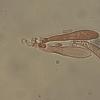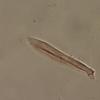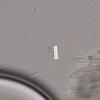
14-01-2026 10:02
Hulda Caroline HolteHello, These ascomycetes were growing on standing

13-01-2026 10:13
 Danny Newman
Danny Newman
Cordieritidaceae sp. on indet. wood w/ Hypoxylon s

13-01-2026 07:57
 Danny Newman
Danny Newman
cf. Bombardia on indet. decorticate woodAppalachia

14-01-2026 07:28
 Danny Newman
Danny Newman
Nemania sp. on indet. decorticate woodAppalachian

12-01-2026 22:02
Ethan CrensonHello all, I am hoping someone will have some ins

11-01-2026 20:35
Hello.A very tiny pyrenomycete sprouting sparsely

13-01-2026 18:55
Rees CronceStrossmayeria sp. on indet. decroticate hardwoodTh

13-01-2026 07:28
 Danny Newman
Danny Newman
Chlorociboria glauca on indet. decorticate logThe

13-01-2026 07:14
 Danny Newman
Danny Newman
Neodasyscypha cerina on indet decorticate logThe S

13-01-2026 09:10
 Danny Newman
Danny Newman
Dasyscyphella chrysotexta on indet. decorticate ha

Hi to all,
I need your help for this brown sessile ascomata that grow on Pseudotsuga.
Hairs are cylindrical, septate and measure about 100µ,They are not ornamented. Asci measure 53x6µ and have an amyloid apical apparatus. The hyaline spores show a few small drops and measure 7-8x2.5µ. I think that the ectal excipulum consists of textura prismatica.
Any idea?
Marc

You see nicely how larger a living ascus is compared to a dead one.
The reddening is strange, unusual for a Hyaloscyphaceae. Perhaps a Psilocistella or Protounguicularia?

Good evening Hans-Otto,
Hairs are hyaline, septate and not tapering.
Picture of the hairs is added
Marc


Good evening Timo and Jac,
Timo, I think there are indeed croziers(cfr last pictures) and I could not find any conspicious glassy tips nor a dextrinoid reaction with IKI.So Protounguicularia seems less likely.
Jac, thank you for the suggestion of Arachnopeziza. It fits for most findings including the croziers but according to my litterature the asci in A. variepilosa should be smaller(26-33µ) and the spores less wide(4-7x1.8-2µ).What do you think?
Marc




http://www.ascofrance.fr/search_forum/47103
This is the brown variant.
With the "median" transiens you mean perhaps Stip's SBRH 895 (MH485390)? I have no docu about that.
My sequence of H.B. 6849c (inofficial) shows a 3% distance to Stip's. It is in GB as Bisporella subpallida strain HB6849A, a confusion with HB 6849c.
6849c is not illustrated but I have a short description. It was hyaline, and the hairs varied in having no glassy caps in some apos. Also a culture was made which might still exist.
Zotto


When I compare the fruitbodies with some pictures on the forum of confirmed Protounguicularia, it looks very very similar to me.
Could it be that the glassy tips are only an transient phenomenon?
Timo, I still have some fresh fruitbodies in the refrigerator. I can sent it to you tomorrow if you give me the necessary instructions.
Marc


http://www.ascofrance.fr/search_forum/47605
where you also brought transiens into discussion.




Hey Timo,
Using the Psilocistella key of Quijada(2014) I think that P vernalis could be the right answer
Marc


Marc

Lovely! It looks like we got a culture also. The Psilocistella are very very unsequenced. I'll see that it gets better soon. I got some spore pictures in water from fresh material. I'll get back.
Timo
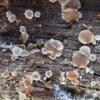


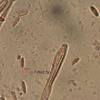

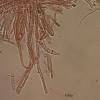
 variepilosa
variepilosa

